Inside Chateau-sur-Mer, an Italianate-style villa known for its extravagant parties during the Gilded Age
Talia Lakritz

- Chateau-sur-Mer in Newport, Rhode Island, was home to three generations of the Wetmore family.
- Its wealthy residents once hosted debutante balls and a 2,000-person picnic.
Before Vanderbilt mansions like The Breakers and Marble House put Newport, Rhode Island, on the map as an escape for the Gilded Age's wealthy elite, there was Chateau-sur-Mer.
French for "castle by the sea," Chateau-sur-Mer was originally built in 1852 for William Shepard Wetmore, who made his fortune as a merchant. He was worth an estimated $1 million in 1847, or around $32 million today, according to the Society for the Preservation of Newport County.
William Shepard Wetmore's children and grandchildren continued to occupy the lavish 12-acre estate until the last Wetmore living there died in 1966. Today, Chateau-sur-Mer is a museum and setting for scenes from HBO's "The Gilded Age."
Take a look inside.
Completed in 1852, Chateau-sur-Mer was originally built as an Italianate-style villa for William Shepard Wetmore.
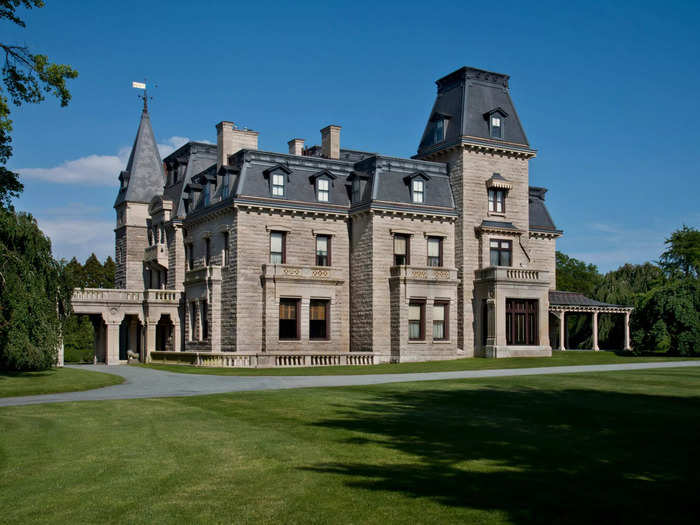
William Shepard Wetmore made his fortune as a merchant importing tea, silks, and other goods from China. He and his wife, Anstiss, had three children: William Jr., George, and Annie. William Jr. died of scarlet fever in 1858.
Anstiss separated from the family when their children were young — she was rumored to have run away to Europe with a coachman.
George Wetmore inherited the home when his father died in 1862.

George Wetmore was governor of Rhode Island from 1885 to 1887. He then served as a US senator from 1895 to 1907 and again between 1908 and 1913. His wife, Edith Wetmore, was a socialite, philanthropist, and hostess. They had two daughters, Edith and Maude, and two sons who died in young adulthood.
In the 1870s, George and Edith Wetmore remodeled Chateau-sur-Mer in the High Victorian style that remains preserved today.
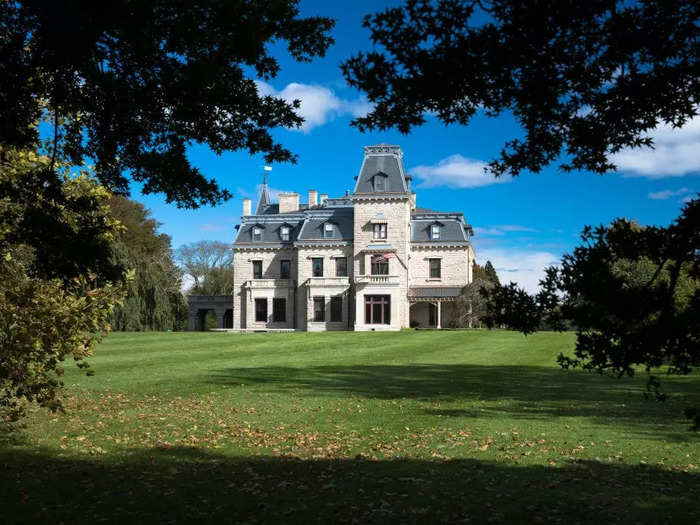
The Wetmores hired Richard Morris Hunt, the same architect who later worked on Vanderbilt estates in Newport, to restructure and redecorate their home while they traveled through Europe.
Chateau-sur-Mer was the earliest Newport mansion to host lavish parties such as debutante balls and a Fête Champêtre picnic for 2,000 guests. It remained Newport's most extravagant residence until the Vanderbilts built homes such as The Breakers and Marble House in the 1890s.
The Preservation Society of Newport County bought Chateau-sur-Mer in 1969 and maintains the historic mansion as a museum.
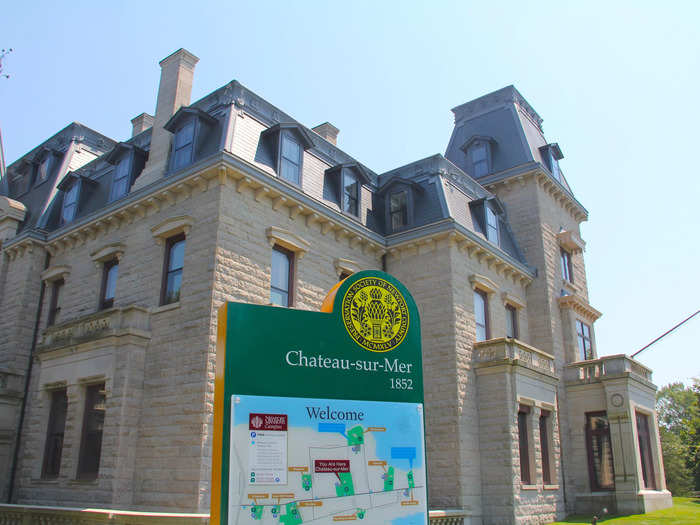
Tickets cost $25 per adult and can be purchased on the Preservation Society's official website. The Newport Mansions app also offers self-guided audio tours.
The entrance to the mansion led to the painted Stair Hall.
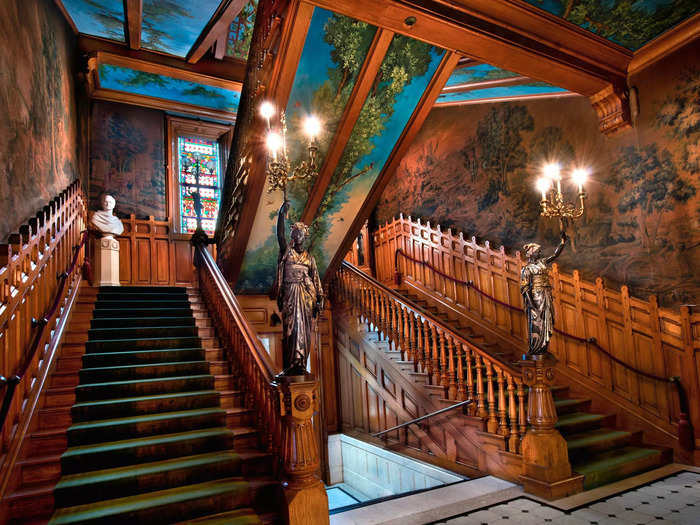
A French sculptor named Émile Guillemin created the bronze statues on either side of the staircase, and the painting on the stairway depicts the biblical Tree of Life.
"What we have here is a perfect example of how no surface would go untouched by an artistic hand," Leslie Jones, the director of museum affairs and chief curator at the Preservation Society, said in the audio tour. "So it really is an example of how this house is a work of art itself."
The stairwell also appeared as part of Mamie Fish's house in New York City in HBO's "The Gilded Age."
The Library was George Wetmore's domain for relaxing or hosting meetings.
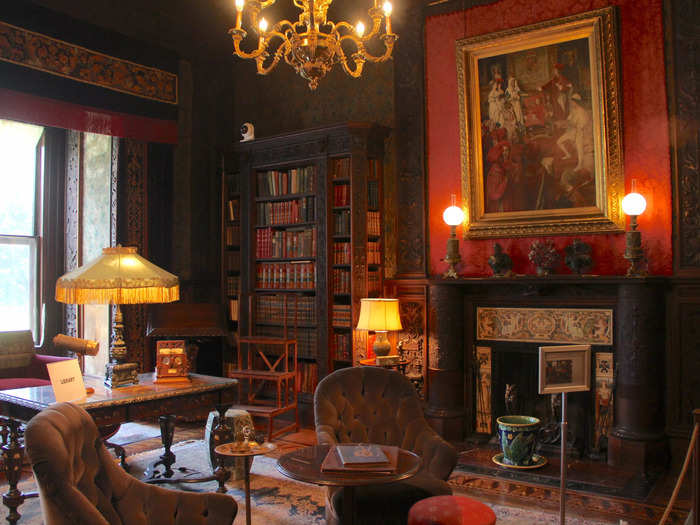
Since George Wetmore inherited his father's fortune, he didn't need to worry about making money. He was a well-traveled patron of the arts who also engaged in public service as a politician.
Luigi Frullini, a sculptor from Florence, constructed the room's wooden bookshelves, furniture, and half-columns called pilasters.
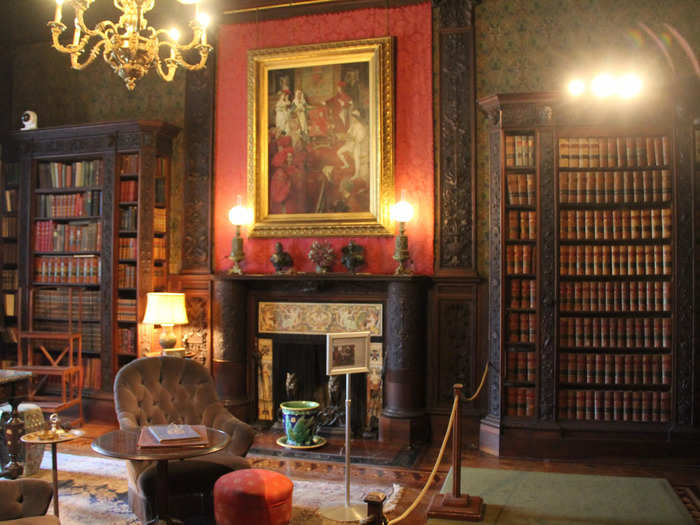
The bookshelf on the right side of the room was a secret door that opened up into the Morning Room. The Morning Room once housed a billiard table, but is now used for checking in visitors.
The Marble Hall Gallery displayed pieces from the Wetmores' art collection.
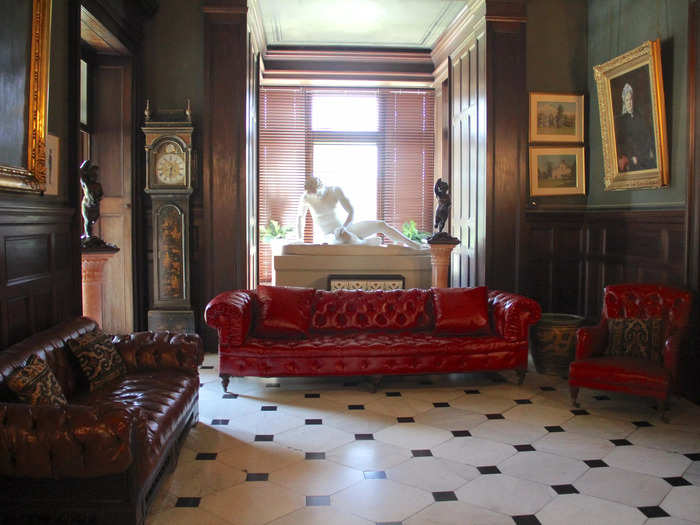
None of the artwork on display in the Marble Hall Gallery today is original to the home. Its contents were sold off when the last Wetmore family member living at Chateau-sur-Mer died in 1966.
The Ballroom was furnished by Léon Marcotte, a French interior decorator, in the Louis XV style, which features furniture with curved legs.
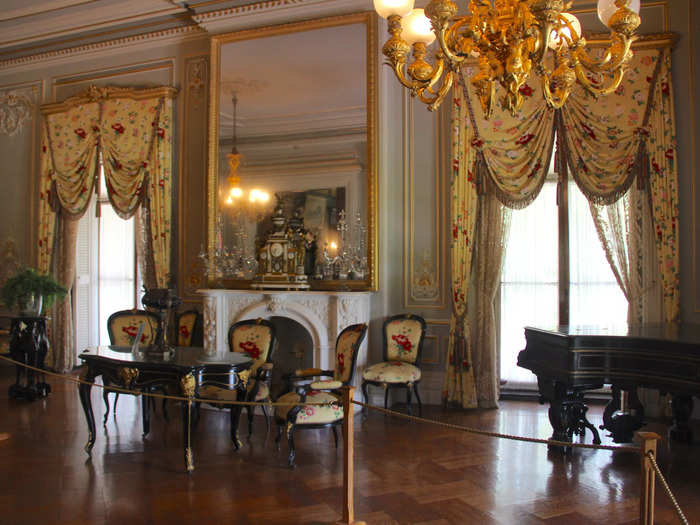
George and Edith Wetmore held their daughters' debutante balls in this room. George's sister Annie also held her wedding there.
An enormous mirror reflected the ballroom's glass lamps in addition to serving as a status symbol.
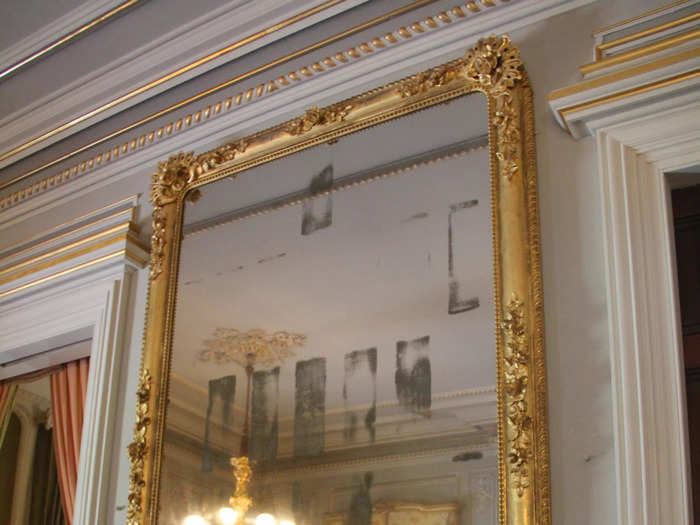
"Large plate glass was still very expensive, so its prominent display in this room is also a demonstration of wealth," Nicole Williams, the Preservation Society's curator of collections, said on the audio tour. "And all the more so because large mirrors like this recalled courtly models from palaces like Versailles."
The Green Salon was designed by Ogden Codman Jr., an architect and interior decorator, to evoke 18th-century France.
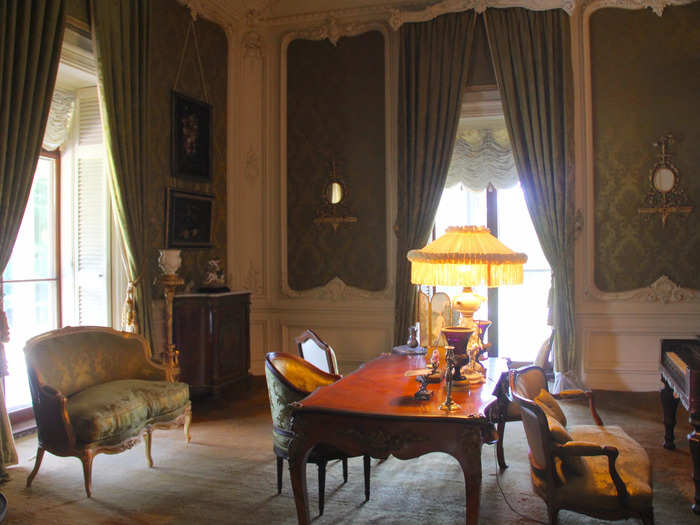
George Wetmore's daughters, Edith and Maude Wetmore, helped found the Preservation Society of Newport County and hosted its first meeting in the Green Salon in 1945.
The table in the festive Dining Room could seat 24 people.
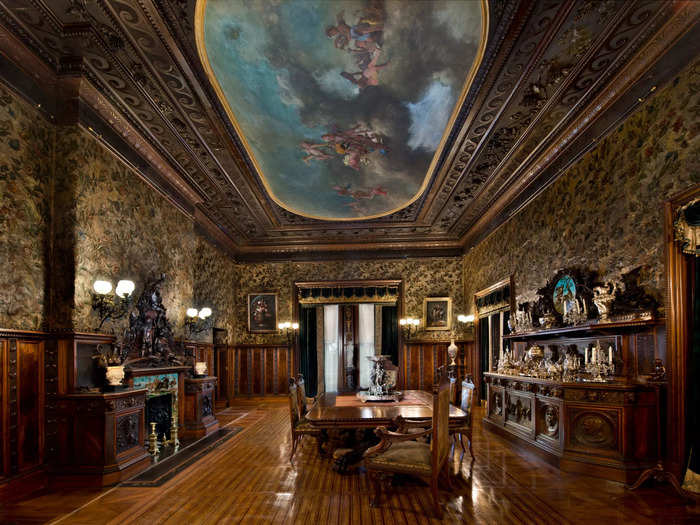
Some of the Wetmores' famous dinner guests included President Chester Arthur and Prince Wilhelm of Sweden.
In "The Gilded Age," the Dining Room at Chateau-sur-Mer served as the setting of Mamie Fish's doll tea party.
Frullini, the sculptor from the Library, carved the Dining Room's fireplace mantle out of one piece of Circassian walnut.
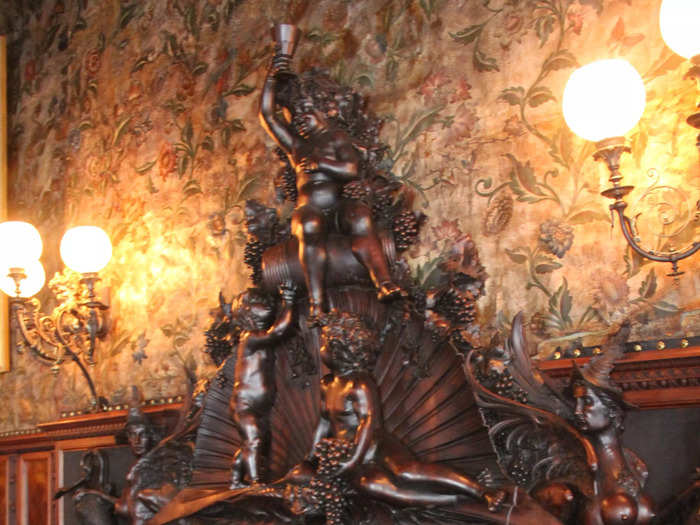
The carving depicts Bacchus, the Roman god of wine and frivolity, surrounded by mythical creatures.
The wallpaper in the Dining Room was made of Spanish leather covered in silver and stamped with flowers.
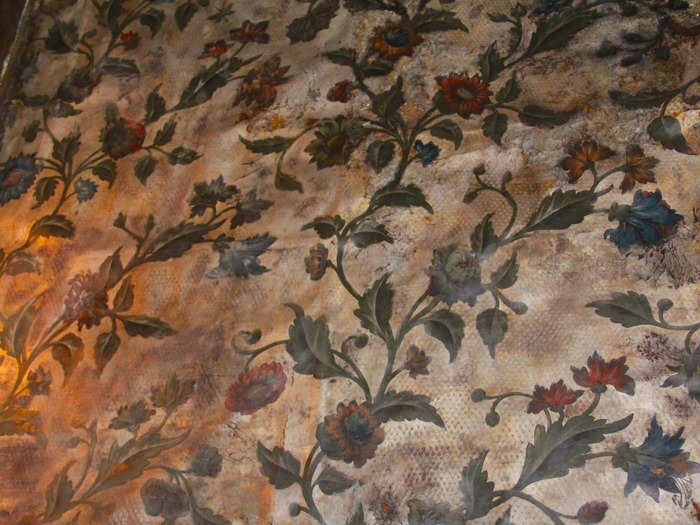
The silver tarnished over time, but it would have glimmered in the light of the room's gaslight lamps when the Wetmores entertained guests.
Just off the Dining Room, the Pantry stored the Wetmores' china sets.
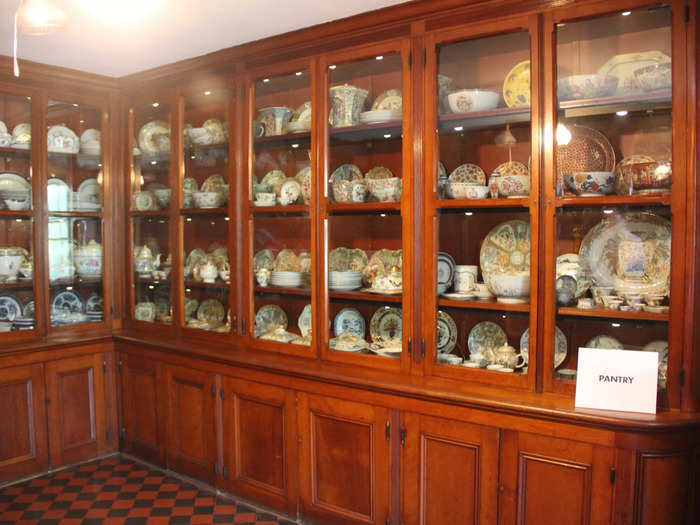
The Pantry also contained a dumbwaiter that transported food up from the basement kitchen to be plated and served.
The items on display were part of the Preservation Society's collection, not the Wetmore family's.
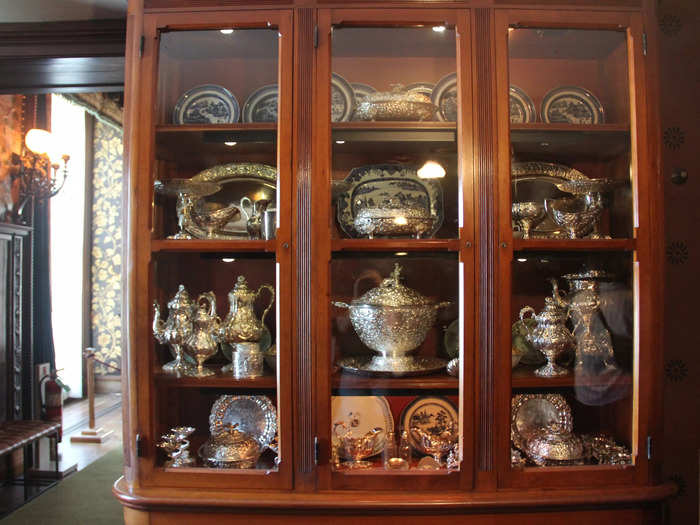
The glass cabinets were more than just decorative — they also helped staff members find the pieces they needed in the dim light from the Pantry's sole window.
The tour continued upstairs in an atrium lit by a skylight.
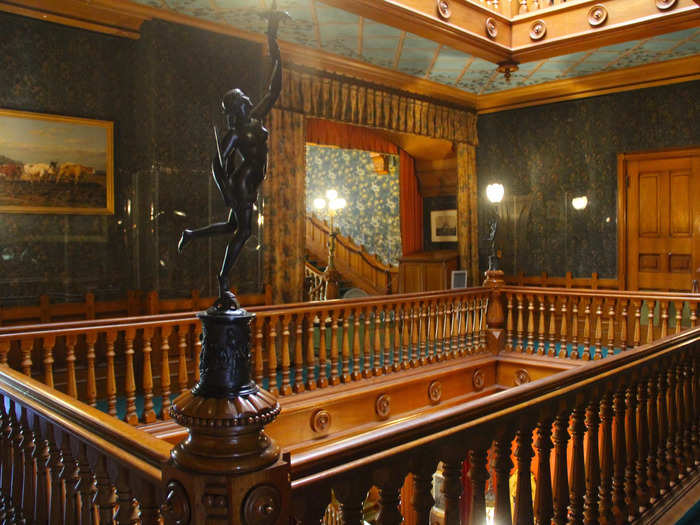
Chateau-sur-Mer spanned three stories, plus service areas in the basement which are closed to the public while they undergo preservation work.
The Great Hall on the first floor was also visible from the balcony.
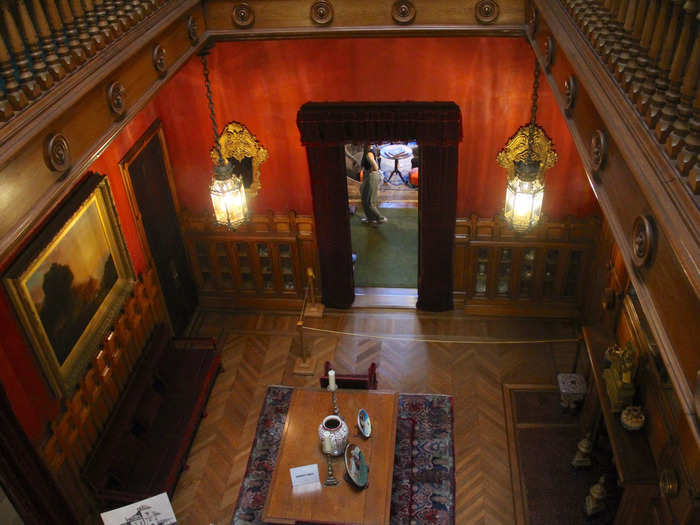
The Great Hall was designed in the 19th-century Eastlake style with dark wood paneling and simple, geometric lines.
George Wetmore's boyhood room was also known as the Butternut Suite for its 11 pieces of butternut wood furniture.
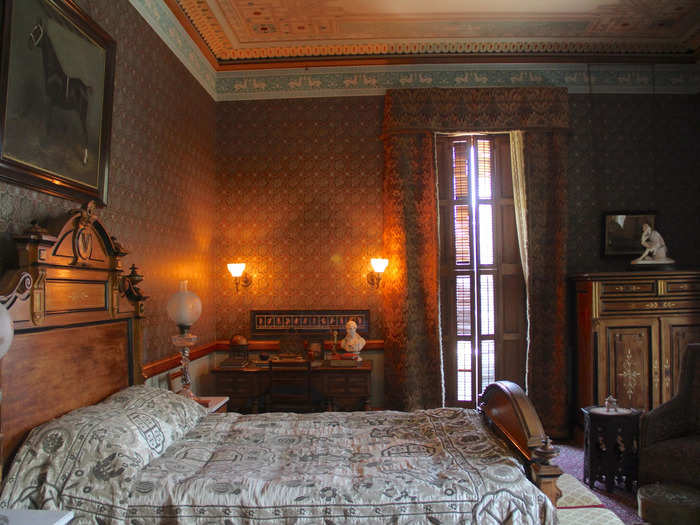
After inheriting Chateau-sur-Mer in 1862, George Wetmore commissioned new bedroom furniture in 1869 from Marcotte, the interior designer who furnished the Ballroom.
The headboard of the bed featured a monogram with George Wetmore's initials.
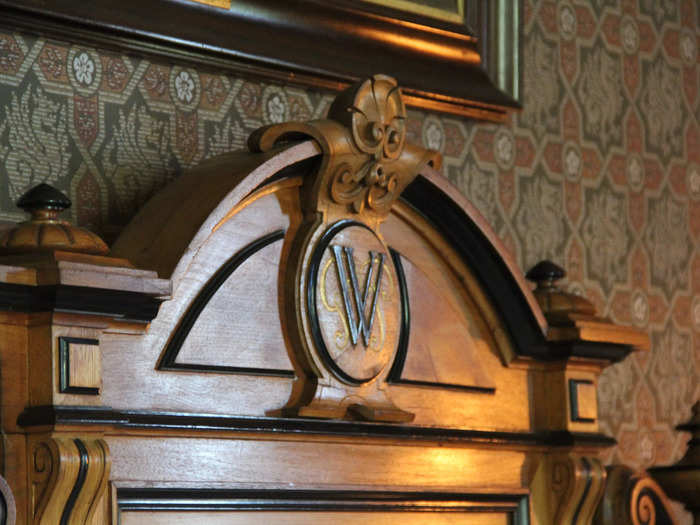
The design featured a black "W" with gold "G" and "P" letters on either side.
George Wetmore's younger sister, Annie Wetmore, slept in this room until her marriage to William Watts Sherman in 1871.
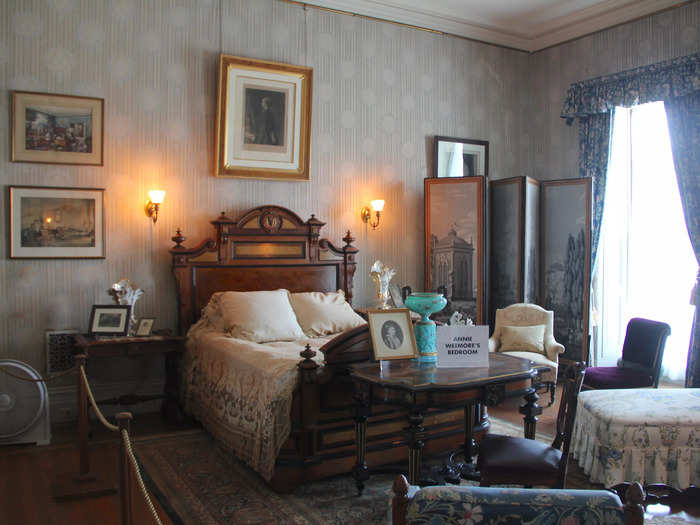
George Wetmore's wedding gift to his sister and her new husband was a piece of Chateau-sur-Mer's land, where they built a home. The property, known as William Watts Sherman house, is now a dorm for Newport's Salve Regina University.
Annie Wetmore's bed also featured a monogrammed headboard.
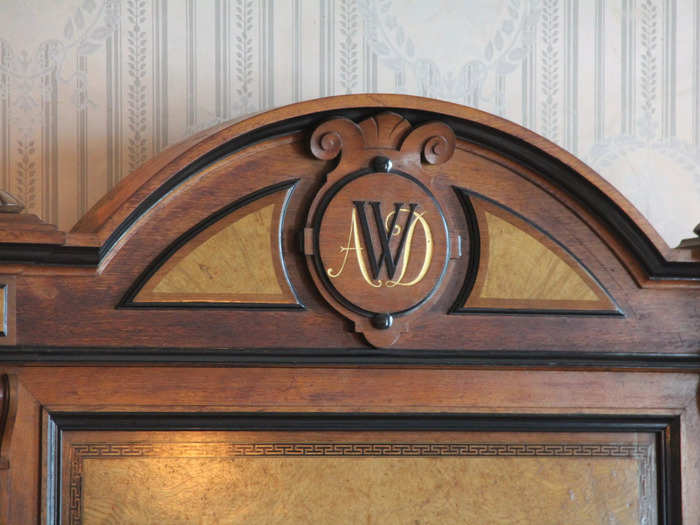
The headboard featured the letters "ADW" for Annie Derby Wetmore.
When the Wetmores lived here, the cabinets in the Second Floor Hall displayed family photos and mementos.
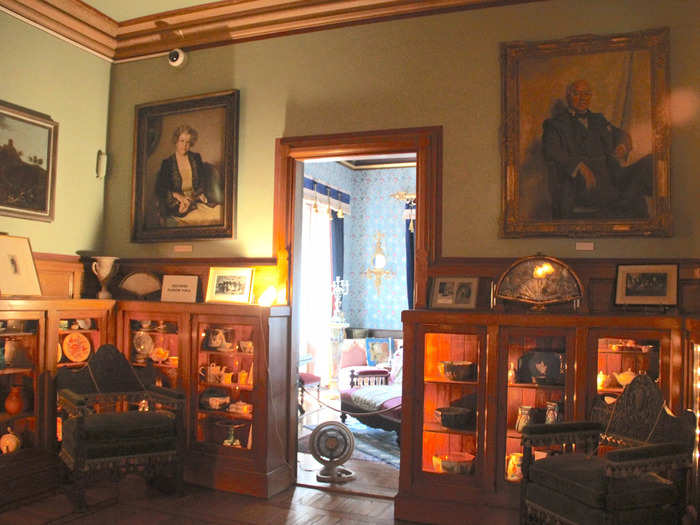
The hallway didn't have any windows since it was located in the middle of the house.
The Turkish Room, decorated with Islamic art, functioned as a private sitting room.
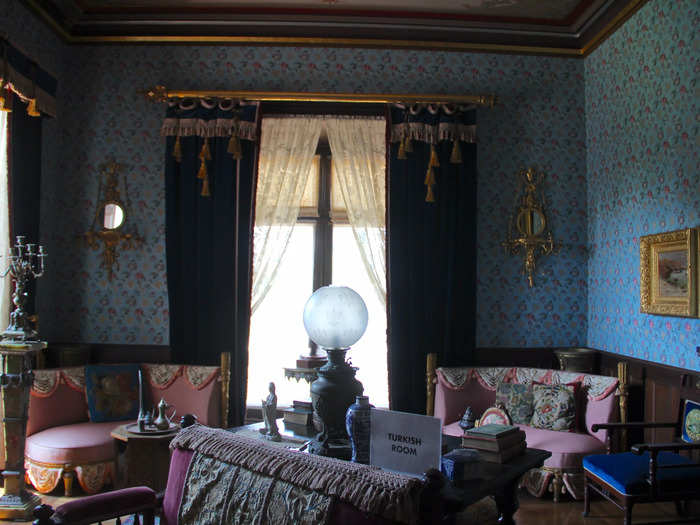
"Turkish" was an umbrella term for designs inspired by the Middle East and Asia that were popular in the 1870s.
"The idea of having a room dedicated to a style or aesthetic from abroad would've been a signal that that family was well-traveled and learned, which was highly coveted during the time," Williams said in the audio tour.
George Wetmore's adult bedroom has remained unchanged since his death in 1921.
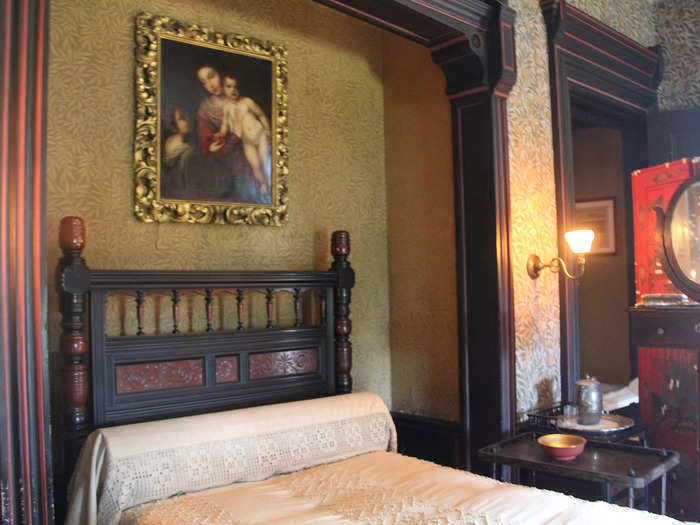
His daughters, Edith and Maude, left his room exactly as it was as a tribute to their father.
His bedroom was decorated with images from nature, a hallmark of the Arts and Crafts movement from the late 19th century.
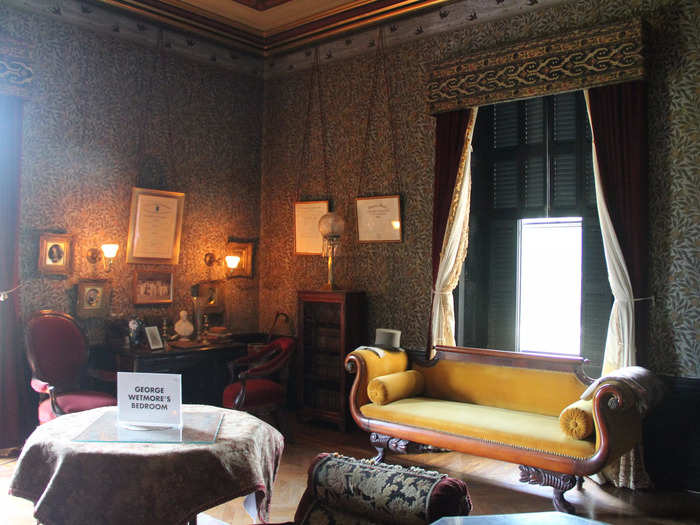
Founded by William Morris, an English poet and artist, the Arts and Crafts movement valued hand-crafted designs over the mass-produced pieces that were gaining popularity.
"Employing individuals in these handcraft industries was a way of preserving that aspect of human history and human creativity and talent," Jones said in the audio tour. "This is not too distant from what we feel today with things like ChatGPT and AI."
Edith Wetmore's bedroom furniture came from Gregory & Co. in London.
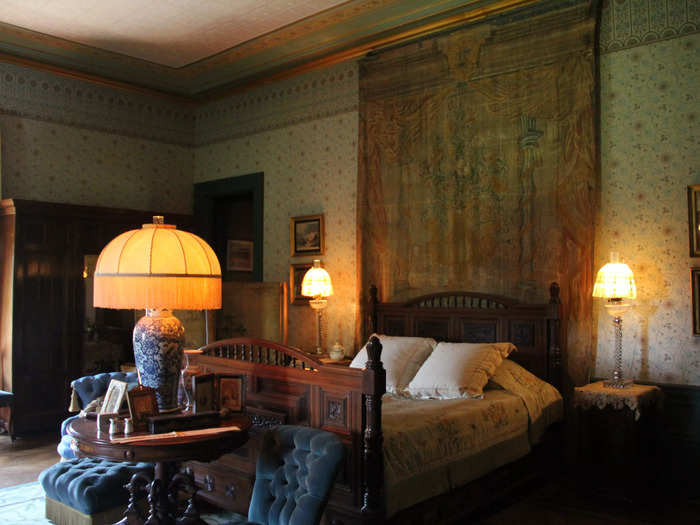
The slipper chairs at the foot of the bed were constructed low to the ground to make it easier for women wearing corsets to change their shoes.
Her bedroom also featured a Boudoir, which Edith Wetmore used as a dressing room.
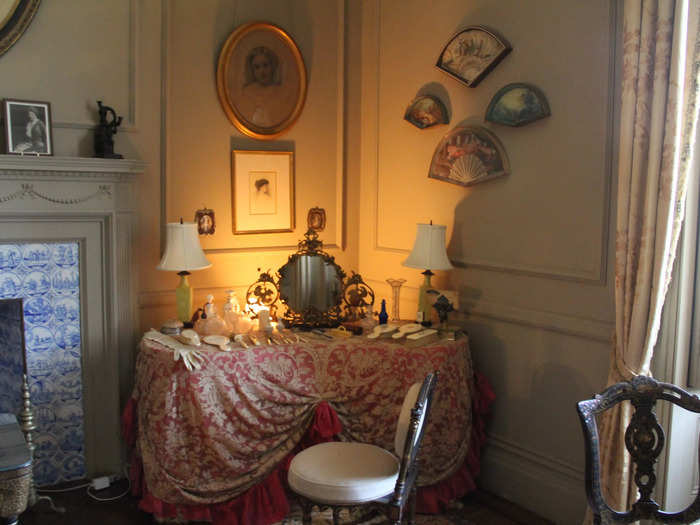
Staff members at Chateau-sur-Mer would help Edith Wetmore style her hair and change outfits several times throughout the day.
The 12-acre grounds are planted with trees from all over the world.
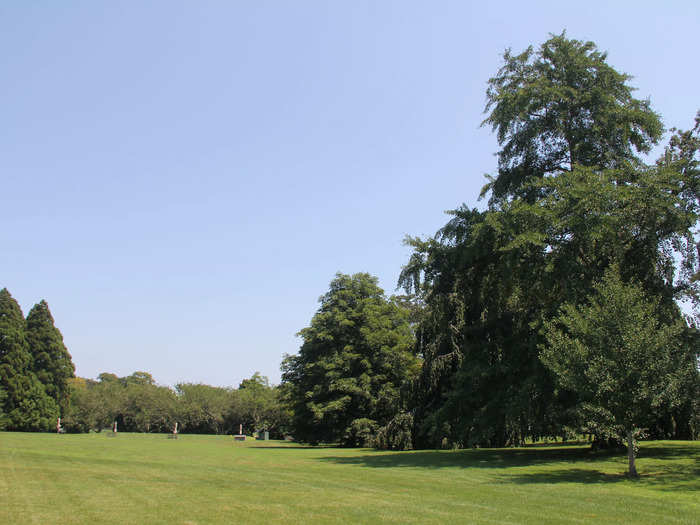
The Wetmores planted European weeping beech, London plane, Japanese maples, and Sargent's weeping hemlock trees in their arboretum.
Chateau-sur-Mer remains unique as a mansion that predates the presence of other wealthy Gilded Age families in Newport.
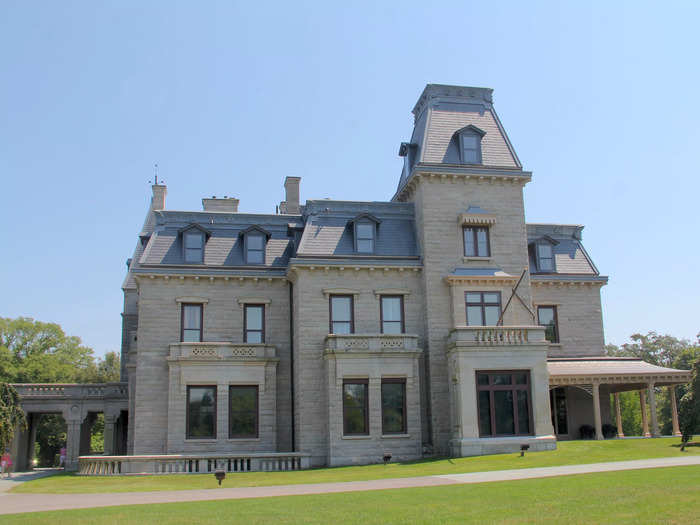
While many Newport "cottages" were only occupied for a few weeks each year, Chateau-sur-Mer was the primary residence of the Wetmore family for three generations. It's a smaller, humbler residence than the Vanderbilt estates, but its exceptional architecture and history make it a worthwhile stop along Newport's famous Bellevue Avenue.
Popular Right Now
Popular Keywords
Advertisement